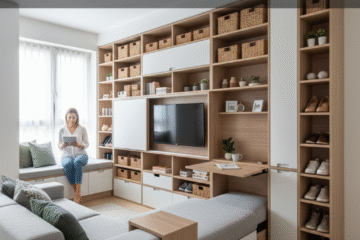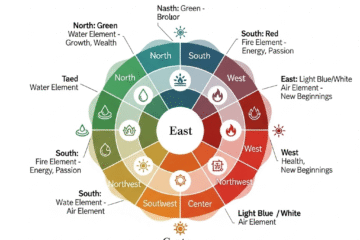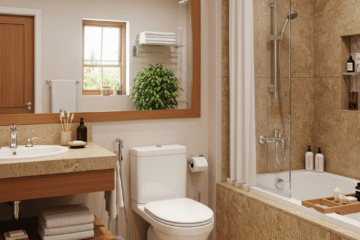
Client Communication & Presentations for Interior Designers – Master Strategies with InteriorGrid.com
In the world of interior design, creativity alone isn’t enough to secure clients or complete successful projects. What sets a true professional apart is effective client communication & presentations. This skill not only builds trust but also ensures smoother project execution, fewer misunderstandings, and greater client satisfaction.
InteriorGrid.com recognizes that while design talent is crucial, the way designers present ideas and interact with clients directly impacts growth and credibility. Strong communication and compelling presentations transform casual inquiries into long-term relationships.
Table of Contents
Want to showcase your professionalism?
Join InteriorGrid.com today and connect with clients who value great communication.
Why Client Communication Matters in Interior Design
Every client brings unique expectations, cultural backgrounds, and budget limitations. Effective Designer-Client Interaction Strategies bridge this gap between vision and reality. Poor communication often leads to project delays, conflicts, and financial losses. On the other hand, transparent communication creates confidence, builds loyalty, and turns satisfied clients into brand advocates.
Key benefits of effective communication include:
- Clearer Understanding of Client Requirements – Effective client communication ensures that designers, contractors, and vendors fully grasp the client’s vision, preferences, and functional needs. This clarity minimizes misunderstandings and ensures that every design decision aligns with the client’s expectations. By documenting requirements through meetings, questionnaires, or digital tools, professionals can create interiors that precisely match the homeowner’s lifestyle, tastes, and budget.
- Reduced Chances of Errors or Rework – When client expectations are clearly communicated and understood from the outset, the likelihood of mistakes, corrections, or complete redesigns decreases significantly. This not only saves time and money but also maintains project flow. Proper documentation, visual mock-ups, and frequent check-ins further ensure that the project progresses smoothly without unnecessary delays.
- Stronger Relationships Leading to Referrals – Transparent, proactive, and attentive communication fosters trust between professionals and clients. Satisfied clients are more likely to recommend services to friends, family, or social networks. This organic word-of-mouth marketing can generate high-quality leads and establish a positive reputation in the interior design community.
- Increased Efficiency in Project Timelines – Clear understanding and continuous updates reduce back-and-forth changes and confusion on-site. Contractors and designers can plan their schedules better, coordinate resources efficiently, and maintain consistent progress. Efficient timelines improve client satisfaction and allow professionals to take on more projects without compromising quality.
- Enhanced Professionalism and Reputation – Maintaining open, structured, and responsive communication reflects high professionalism. Clients appreciate designers and contractors who actively listen, clarify doubts, and provide regular progress updates. Over time, this approach strengthens credibility, builds a strong portfolio of successful projects, and enhances the overall reputation of the professional or firm in the interior design industry.
The Role of Presentations in Winning Clients
First impressions are lasting. A designer may have brilliant ideas, but if they are not communicated well, clients may feel disconnected or unimpressed. Professional Designer-Client Interaction Strategies make abstract design concepts tangible and relatable.
Impact of strong presentations:
- Helps Clients Visualize Designs Before Execution – Presenting designs through 3D renderings, mood boards, sketches, or virtual walkthroughs allows clients to see a tangible version of their space before any physical work begins. This visualization bridges the gap between abstract ideas and reality, enabling clients to understand layout, color schemes, material textures, and spatial flow. When clients can clearly picture the final result, it reduces confusion, prevents costly changes later, and ensures that the finished interior aligns with their expectations.
- Builds Excitement and Confidence in the Designer’s Expertise – High-quality visual presentations communicate professionalism and skill. When clients see detailed renderings or digital simulations, it instills confidence in the designer’s abilities and creative vision. This excitement also fosters a stronger emotional connection to the project, as clients feel involved and inspired by the design journey. It enhances trust and reassures them that the project is in capable hands.
- Justifies Budgets by Showcasing Value Through Visuals – Visual tools effectively demonstrate the benefits and quality of proposed materials, furnishings, and design elements. By comparing options and highlighting premium choices, designers can illustrate how every expense contributes to the overall look, function, and longevity of the interiors. This helps clients understand the rationale behind each cost and reduces resistance to spending on quality products or services.
- Makes It Easier to Secure Approvals and Move Forward – When clients can see a clear representation of their space, decision-making becomes faster and more confident. Stakeholders, such as family members or investors, are more likely to approve designs when they are presented visually. This streamlined approval process minimizes delays, prevents misunderstandings, and allows the project to move from concept to execution smoothly.
Portfolio Presentations vs. Project Presentations
There are two major types of Client Communication & Presentations in interior design:
- Portfolio Presentations: These are used to introduce your overall design capabilities. They highlight past projects, design styles, and the range of services you offer. The goal is to impress potential clients and win their trust.
- Project-Specific Presentations: These focus on the client’s individual project. They include concept boards, mood boards, layouts, 3D renders, material samples, and budget breakdowns. The goal is to align client expectations with design execution.
Tools for Effective Client Communication & Presentations
Technology has revolutionized the way designers interact with clients. Some powerful tools include:
- 3D Rendering Software (SketchUp, AutoCAD, 3ds Max): Helps clients visualize spaces before implementation.
- Presentation Platforms (PowerPoint, Canva, Keynote): Create engaging layouts for meetings.
- Virtual Meeting Apps (Zoom, Google Meet): Essential for remote client interactions.
- Collaboration Tools (Trello, Asana, Slack): Streamline project communication.
- InteriorGrid.com Vendor Dashboard: Allows professionals to showcase projects, communicate updates, and track progress.
Steps to Improve Client Communication
- Listen Before You Speak: Understand client needs, lifestyle, and preferences before offering solutions.
- Clarify Budget Early: Avoid misunderstandings by being upfront about costs.
- Explain the Design Process: Break down each phase—concept, approval, sourcing, execution—so clients know what to expect.
- Avoid Jargon: Use simple, relatable language instead of technical terms.
- Document Everything: Always follow up verbal discussions with written communication.
Design Presentations That Impress Clients
The best presentations are visual, concise, and emotionally engaging. Here are some client communication & presentations tips for impact:
- Start with Mood Boards to Set the Tone of the Design – Mood boards are a powerful way to introduce clients to the visual direction of their interiors. They combine colors, textures, materials, furniture pieces, and inspirational images into a cohesive visual reference. By presenting a mood board, designers help clients understand the overall style, theme, and atmosphere of the proposed space. This early visualization ensures that everyone is aligned on the aesthetic vision before moving to detailed plans, minimizing the risk of costly changes later.
- Use 3D Walkthroughs or AR/VR Experiences for Immersive Visuals – Leveraging 3D modeling or augmented/virtual reality allows clients to experience their future home virtually. They can “walk” through rooms, assess spatial flow, and get a real sense of scale, lighting, and layout. Immersive visual experiences bridge the gap between imagination and reality, helping clients make informed decisions about furniture placement, color palettes, and design elements. These technologies also demonstrate the designer’s expertise and innovative approach.
- Include Before-and-After Comparisons to Show Transformation Potential – Displaying side-by-side images of existing spaces and proposed designs highlights the transformative impact of interior work. Before-and-after comparisons help clients appreciate how design interventions improve functionality, aesthetics, and overall living experience. This visual storytelling builds excitement, justifies the investment, and reassures clients that their home is in capable hands.
- Present Multiple Options Within the Client’s Budget – Offering a range of design options tailored to the client’s budget encourages informed decision-making. Designers can showcase variations in materials, furniture styles, layouts, or finishes, illustrating how different choices impact cost, look, and functionality. This flexibility empowers clients, builds trust, and ensures that the final solution aligns with both their preferences and financial plan.
- Incorporate Real Samples of Fabric, Wood, or Finishes for Tactile Engagement – Physical samples of materials allow clients to touch and feel the textures, assess colors under real lighting, and gauge quality. Tactile interaction complements digital presentations, bridging the gap between concept and reality. It also helps clients make confident selections, reduces uncertainty, and enhances their emotional connection to the design.
Showcase your design process and project presentations with InteriorGrid.com to impress potential clients.
Building Trust Through Communication
Trust is not built overnight; it’s earned through consistent, respectful communication. Be transparent about timelines, costs, and limitations. Update clients regularly on progress, delays, or material availability. Even when delivering bad news, honesty strengthens the client-designer relationship.
Proven trust-building practices include:
- Effective Client Communication & Presentations are crucial for successful interior design projects. Clear, engaging, and timely communication ensures that clients’ visions are understood, approved, and executed efficiently. Using a structured Client Communication & Presentations approach allows designers to showcase their ideas professionally, maintain transparency, and build trust.
- 3D Rendering Software
- 3D rendering software such as SketchUp, AutoCAD, and 3ds Max plays a key role in Client Communication & Presentations. These tools help clients visualize spaces before implementation, making design concepts more tangible. Following modern Client Communication & Presentations practices, 3D renders reduce misunderstandings and allow clients to approve layouts, colors, and furnishings confidently. Incorporating 3D software into Client Communication & Presentations enhances clarity, professionalism, and client satisfaction.
- Presentation Platforms
- Presentation platforms like PowerPoint, Canva, and Keynote are essential in professional Client Communication & Presentations. They allow designers to create engaging layouts, organize project information, and present proposals clearly. By using these tools in Client Communication & Presentations, interior professionals can highlight design choices, budgets, and timelines effectively. Well-prepared Client Communication & Presentations ensure meetings are productive and visually appealing.
- Virtual Meeting Apps
- Virtual meeting apps such as Zoom and Google Meet have become integral to modern Client Communication & Presentations. These platforms facilitate remote client interactions, ensuring real-time discussions regardless of location. Incorporating virtual meetings into Client Communication & Presentations allows designers to present updates, gather feedback, and resolve queries efficiently. Using virtual tools in Client Communication & Presentations ensures seamless collaboration in today’s fast-paced environment.
- Collaboration Tools
- Collaboration tools like Trello, Asana, and Slack are crucial for organized Client Communication & Presentations. They streamline project updates, task assignments, and team communication. According to expert Client Communication & Presentations strategies, these platforms keep clients informed while enabling internal teams to track progress. Effective use of collaboration tools in Client Communication & Presentations prevents miscommunication and ensures timely project delivery.
- InteriorGrid.com Vendor Dashboard
- The InteriorGrid.com vendor dashboard enhances Client Communication & Presentations by allowing professionals to showcase projects, share updates, and track progress with clients. Using this platform as part of Client Communication & Presentations, designers can maintain transparency, provide real-time visuals, and facilitate approvals. Integrating InteriorGrid.com in Client Communication & Presentations improves client experience and strengthens professional credibility.
- Benefits of Effective Client Communication & Presentations
- Visual Clarity: Tools like 3D rendering software improve Client Communication & Presentations by making designs tangible.
- Enhanced Engagement: Presentation platforms enhance Client Communication & Presentations with appealing layouts and organized content.
- Seamless Remote Interaction: Virtual meeting apps make Client Communication & Presentations efficient for remote clients.
- Streamlined Collaboration: Tools like Trello and Slack improve Client Communication & Presentations by keeping teams and clients aligned.
- Transparency and Tracking: Vendor dashboards enhance Client Communication & Presentations by providing project updates in real-time.
- How Client Communication & Presentations Transform Projects
- Following structured Client Communication & Presentations processes ensures projects run smoothly, deadlines are met, and clients remain satisfied. By integrating 3D rendering, presentation platforms, virtual meetings, collaboration tools, and vendor dashboards into Client Communication & Presentations, designers can bridge the gap between concept and execution. Effective Client Communication & Presentations not only showcase creativity but also foster trust, clarity, and professionalism.
- In conclusion, Client Communication & Presentations are indispensable for modern interior design workflows. By leveraging technology, visualization tools, and structured communication strategies, professionals can deliver projects that meet client expectations and enhance overall satisfaction.
Handling Difficult Clients with Effective Communication
Not all clients are easy to deal with. Some may be indecisive, demanding, or unrealistic. Skilled client communication & presentations can turn challenges into opportunities.
Tips for handling tough clients:
- Effective Client Communication & Presentations are the backbone of every successful interior design project. Clear, structured, and professional communication ensures that client expectations are understood, design decisions are approved efficiently, and projects run smoothly. Following a well-planned approach to Client Communication & Presentations helps designers build trust, manage expectations, and deliver satisfying results.
- Stay Patient and Professional
- A key principle in Client Communication & Presentations is maintaining patience and professionalism at all times. Clients may have differing opinions or concerns, and staying composed ensures productive discussions. Modern Client Communication & Presentations emphasize listening carefully, addressing queries respectfully, and guiding clients toward informed decisions. By practicing patience in Client Communication & Presentations, designers create a collaborative and positive environment that encourages client satisfaction.
- Document All Discussions and Approvals
- Documentation is essential in effective Client Communication & Presentations. Recording every discussion, decision, and approval protects both the client and the designer. According to best practices in Client Communication & Presentations, detailed notes, emails, and signed approvals prevent misunderstandings and provide a clear reference throughout the project. By integrating documentation into Client Communication & Presentations, professionals can ensure accountability, transparency, and smooth workflow.
- Break Down Complex Decisions into Smaller Steps
- Complex design choices can overwhelm clients, so breaking them down into smaller, manageable steps is a critical aspect of Client Communication & Presentations. This approach allows clients to make informed decisions without feeling pressured. Following structured Client Communication & Presentations, designers can explain layouts, color schemes, or furniture options step by step. Using this method in Client Communication & Presentations increases clarity, reduces confusion, and ensures smoother approvals.
- Manage Expectations by Showing Realistic Renderings
- Managing client expectations is a central focus in professional Client Communication & Presentations. Realistic renderings, whether 3D images or walkthroughs, help clients visualize the final result accurately. According to modern Client Communication & Presentations practices, showing practical renderings prevents disappointment and aligns client vision with feasible solutions. By integrating realistic visuals into Client Communication & Presentations, designers set clear expectations and build trust.
- Focus on Solutions Instead of Arguments
- During discussions, challenges or disagreements may arise. Effective Client Communication & Presentations prioritize solutions over arguments. Addressing issues constructively and offering alternative options ensures progress and satisfaction. Following this principle in Client Communication & Presentations fosters collaboration and keeps the project moving forward efficiently. Well-executed Client Communication & Presentations maintain professionalism while resolving conflicts positively.
- Benefits of Structured Client Communication & Presentations
- Builds Trust: Consistent professionalism in Client Communication & Presentations strengthens client relationships.
- Ensures Clarity: Documenting discussions in Client Communication & Presentations prevents misunderstandings.
- Simplifies Complex Decisions: Step-by-step explanations in Client Communication & Presentations make choices easier for clients.
- Aligns Expectations: Realistic renderings in Client Communication & Presentations prevent discrepancies between vision and execution.
- Promotes Problem-Solving: Focusing on solutions in Client Communication & Presentations ensures projects remain on track.
- How Client Communication & Presentations Transform Projects
- Following structured Client Communication & Presentations processes ensures projects are executed efficiently, budgets are respected, and clients remain satisfied. By staying professional, documenting approvals, breaking down decisions, showing realistic visuals, and focusing on solutions, Client Communication & Presentations bridge the gap between design intent and client expectations. Effective Client Communication & Presentations not only streamline workflows but also enhance client trust and project quality.
- In conclusion, Client Communication & Presentations are vital for successful interior design projects. By integrating these best practices, professionals can ensure smooth communication, informed decisions, and high client satisfaction throughout every stage of a project.
Non-Verbal Communication in Client Meetings
Body language, tone of voice, and confidence often matter more than words. Clients subconsciously judge professionalism through these cues.
- Maintain eye contact for trust
- Use open gestures to appear approachable
- Keep presentations structured and polished
- Dress professionally for meetings
Common Mistakes to Avoid in Client Communication & Presentations
- Overloading presentations with too many details
- Using design jargon that confuses clients
- Ignoring feedback or forcing personal preferences
- Underestimating the importance of follow-ups
- Promising more than you can deliver
The Future of Client Communication in Interior Design
The future lies in technology-driven communication. Augmented reality (AR) and virtual reality (VR) are becoming mainstream, enabling clients to walk through their future homes digitally. AI-powered tools will further personalize design experiences. Interior designers who adapt to these innovations will stay ahead in client engagement.
Conclusion
Strong client communication & presentations are the backbone of successful interior design projects. From building trust to securing approvals, effective communication ensures smooth execution and satisfied clients. By mastering active listening, storytelling, professional presentations, and technology-driven tools, interior designers can elevate their client relationships and grow their brand with confidence.










